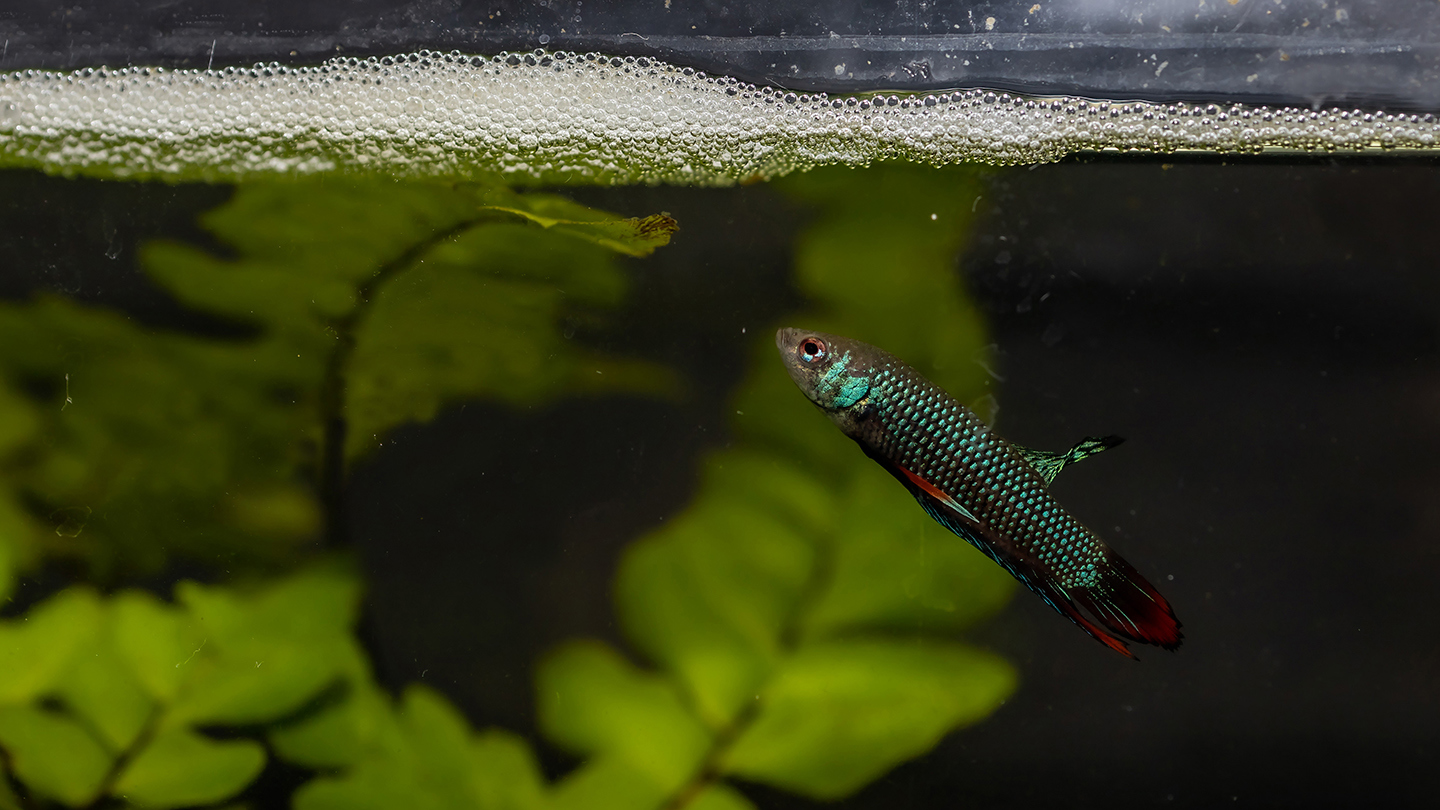100 years of research mapped – in iconic journal
2023-07-10

Ola Svensson is Associate Professor in evolutionary ecology at the University of Borås, and mainly teaches biology to pre-school and teacher students. For almost 30 years now, he has been researching various parts of fish reproduction, and is the lead author of the article How sexual and natural selection interact and shape the evolution of nests and nesting behaviour in fishes which has now been published in Philosophical Transactions of the Royal Society B: Biological Sciences.
Together with research colleague Charlotta Kvarnemo, Professor of Zoology at Gothenburg University, he has reviewed 400 books and articles focusing on sexual selection in nest-building fish. The article cites 200 of these, where they also draw parallels to other nest-building animals such as frogs and birds.
“Research does not have to be new to be relevant and it does not have to have a quick impact or benefit. We have noticed how research has changed, from a broader natural history view in the past with more peripheral information about what the fish are doing, to a narrower focus in modern research. We have also focused on definitions of nests, what they are, and definitions of sexual and natural selection”, said Ola Svensson, who declares that he learned a lot.

Risk of ruining what we don't know
The compilation provides a comprehensive overview of the knowledge that exists and that has been researched over the past 100 years. Nest-building behaviour has evolved both as a result of natural selection and sexual selection. The literature also shows large gaps in knowledge. Ola Svensson tells us that there are many species, even among aquarium fish and commercially important fish, whose reproduction and evolutionary ecology we don't know much about. There is a tangible risk that people do great harm without understanding the consequences.
“Sometimes you can hear people complain that "we can't dredge right now, because the fish are spawning". But what would happen if we do not take into account the fish's spawn? Reproduction must work – if you ignore it, we have no fish”, said Ola Svensson.
Many nest-building fish spawn at the bottom. If the bottom becomes silted up, for example because the mangrove forest is cut down, the fish face devastation. Many large nests are not only home to nest builders' young, but they also become spawning grounds for smaller species. Sometimes nests are discovered by chance, as when German scientists discovered the world's largest spawning ground for icefish, off Antarctica, this year.
“It is estimated that there are 60 million nests of fish that reproduce at a depth of 500 meters. Imagine the consequences it would have if you suddenly trawled there”, said Ola Svensson.
Iconic journal
Sticklebacks, certain species of cichlids, and sand and common gobies are among the most extensively studied species. There are hundreds of scientific articles about sand and common gobies in particular, of which Ola Svensson and research colleagues Charlotta Kvarnemo and Kai Lindström have in total written over a hundred. Ola and his colleagues have, among other things, mapped the genome of the sand goby and shown how the sand goby - one of Sweden's most common small fish that live near the shore - makes sounds to attract a female.
What does it mean to be published in Philosophical Transactions of the Royal Society B: Biological Sciences?
“It’s great, it's an iconic journal where Newton, Darwin, and Franklin and others have published. It is the journal that many others imitate and these days it has become more specialised.”
Three facts about nests and nest-building fish
- A nest is the built place where the eggs are laid and the young grow up, and where the nest fulfils the needs of the young.
- Fish nests can look very different. It can be a pit in the sand, or a leaf of the "right" kind, which cichlids clean and move around. It can also be a pile of stones or shells, or mussel shells covered with sand. The sticklebacks builds nests by tying plant parts together with a type of glue produced in the fish's kidneys. Some catfish build nests of foam, with or without embedded plant parts. To name a few examples.
- In fish, it is usually the male who builds the nest and takes care of the young. Sometimes it's both together. It is more unusual for the female to build a nest.
Read more
Lina Färm. Translation by Suss Wilén
Stock photo: Adobe Stock. Portrait Photo: Ola Svensson

